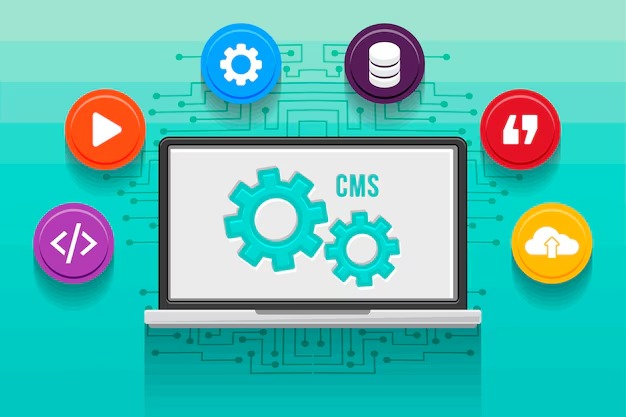The Rise of No-Code Development Platforms
Published on October 27, 2024

Author: Yiga Richard
In recent years, no-code development platforms have transformed the landscape of software creation, empowering people with little to no coding experience to build fully functional applications. These platforms provide user-friendly interfaces, pre-built components, and drag-and-drop tools that make app development accessible and efficient. As demand for software grows, businesses are turning to no-code solutions to create applications faster, reduce development costs, and drive innovation across teams. In this blog, we explore the rise of no-code development platforms, their benefits, and their impact on the future of app development.
1. What Are No-Code Development Platforms?
No-code development platforms enable users to build applications using a visual interface rather than writing code. By leveraging pre-configured templates, workflows, and components, users can drag and drop elements to design and implement app features. These platforms lower the technical barrier, allowing non-developers or "citizen developers" to create solutions tailored to their needs without relying on IT teams.
Popular platforms like Bubble, Airtable, and Appgyver offer extensive functionality, including database integration, user authentication, and workflow automation, making them suitable for a range of applications, from websites and e-commerce platforms to complex internal tools.
2. Key Benefits of No-Code Platforms
- Speed of Development: No-code platforms allow users to build applications much faster than traditional coding methods. By using ready-made components and templates, businesses can rapidly prototype, test, and deploy applications, reducing time-to-market significantly.
- Lower Costs: Since no coding skills are required, businesses save on hiring specialized developers and instead empower existing employees to create solutions, saving time and reducing development costs.
- Enhanced Collaboration: No-code platforms encourage collaboration between technical and non-technical team members. This fosters a more inclusive development process where insights from different departments can directly influence the final product.
- Flexibility and Scalability: Many no-code platforms offer scalable solutions with integrations to popular tools and services, such as CRMs, databases, and analytics platforms, allowing businesses to scale applications as they grow.
3. Empowering Citizen Developers
Citizen developers are non-technical employees who, thanks to no-code platforms, can now create and manage applications relevant to their roles. For instance, a marketing manager could use a no-code platform to build a customized CRM or a project manager could create a workflow automation tool. This shift empowers employees to solve specific challenges quickly and effectively, without waiting on developer resources, which are often limited.
The empowerment of citizen developers also helps free up IT departments to focus on more complex projects and strategic initiatives, leading to a more efficient allocation of resources.
4. Use Cases for No-Code Development
No-code platforms are being adopted across industries for a wide range of applications, including:
- Internal Tools and Dashboards: Businesses can create custom internal tools for tracking KPIs, managing inventory, or processing data without investing in complex, costly software.
- Automation and Workflow Management: No-code tools like Zapier and Integromat help automate repetitive tasks, such as sending emails or updating CRM records, improving productivity and reducing errors.
- E-commerce and Websites: No-code platforms like Shopify or Webflow make it easy to set up e-commerce stores and websites without needing to write HTML, CSS, or JavaScript.
- Customer Relationship Management (CRM): No-code tools allow teams to create customized CRMs tailored to their unique workflows, making it easier to track interactions, manage leads, and improve customer satisfaction.
5. Addressing Limitations of No-Code Platforms
While no-code platforms offer many benefits, they do have limitations. For highly complex applications that require extensive customization, security, or proprietary integrations, traditional development may still be necessary. Additionally, as applications built on no-code platforms grow, they may encounter scalability issues or lack the flexibility to handle more sophisticated functionality.
However, for businesses looking to build relatively simple applications quickly and affordably, no-code platforms remain an excellent option. Many no-code platforms also allow for integration with low-code or full-code solutions, providing flexibility as project requirements evolve.
6. The Future of No-Code Development
The rapid adoption of no-code platforms is driving innovation in app development, making it accessible to a broader audience. As these platforms evolve, they’re becoming more robust, with enhanced security features, scalability options, and more advanced functionalities. The rise of artificial intelligence (AI) and machine learning (ML) is also expanding the potential of no-code platforms, enabling predictive analytics, personalized experiences, and smart automation.
No-code development is expected to continue growing, enabling more organizations to solve problems and adapt to market changes quickly, fostering a new era of innovation.
Conclusion
No-code development platforms are reshaping the way businesses approach app creation, enabling speed, affordability, and accessibility that were once out of reach for non-developers. By empowering employees across departments to participate in the development process, businesses can address unique challenges, drive efficiencies, and remain agile in a rapidly changing environment. As technology advances, no-code platforms will likely become an integral part of app development strategies, democratizing technology and enabling a culture of innovation across industries.